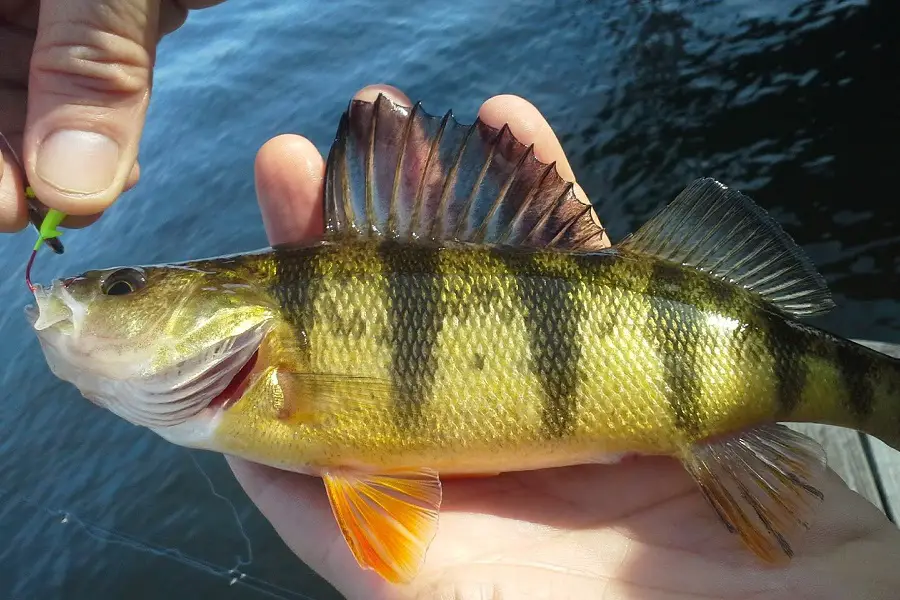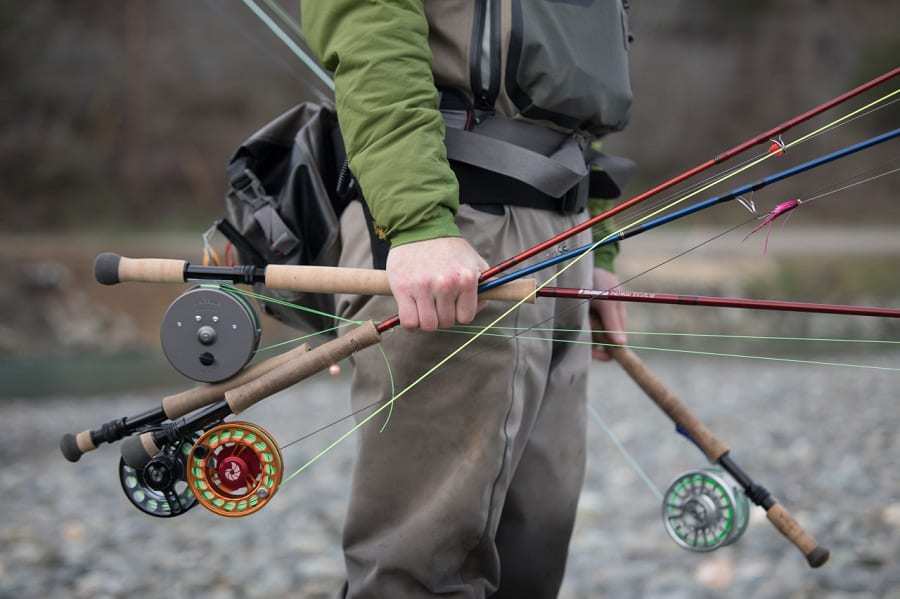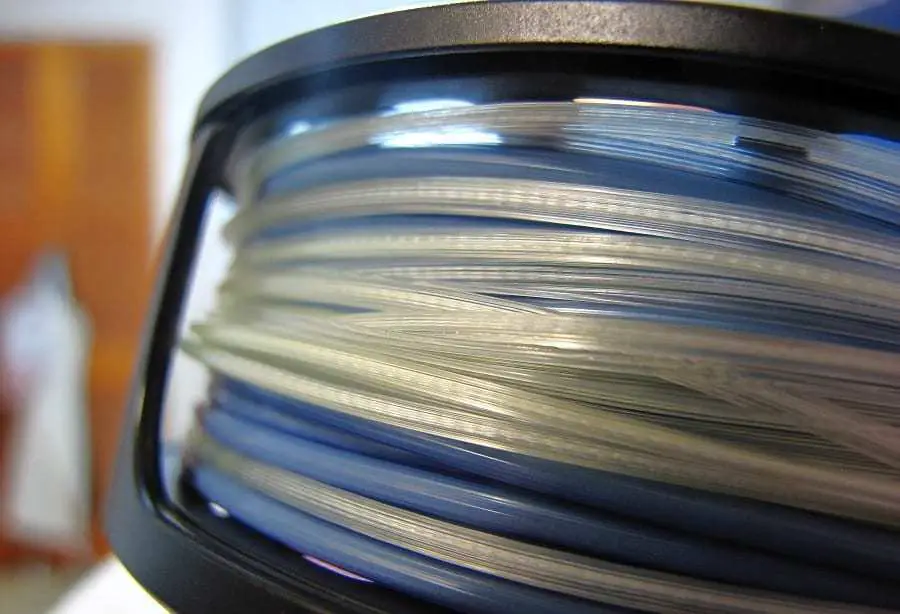Are you ready to reel in some perch? Perch fishing is a great way to spend time outdoors and enjoy the thrill of the catch.
But if you’re new to perch fishing, it can be overwhelming to know where to start.
In this post, we’ll cover everything you need to know about perch fishing, from what they are and how to catch them using different techniques.
Whether you’re a seasoned angler or a beginner looking for tips on how to fish for perch, this guide has got you covered.
What Are Perch Fish?

Perch fish is a popular freshwater species in North America and Europe that are easily recognizable by their striped appearance.
They are prized by anglers for their abundance and tasty flesh. There are different species, like yellow, European, and white perch, available to catch.
There are various fishing techniques that can be employed to catch these fish, including using live bait or lures.
Anglers can also use different types of fishing gear, such as spinning rods or fly rods, to increase their chances of success.
When it comes to cooking perch, they can be fried, baked, or grilled and served as a delicious meal for family and friends.
How To Catch a Perch?
To catch perch, use small live bait and bright jigs or spinners in shallow waters near structures where perch hide.
Keep an eye on the weather and time of day, as these factors can impact perch behavior.
#1 Using Minnows as Bait
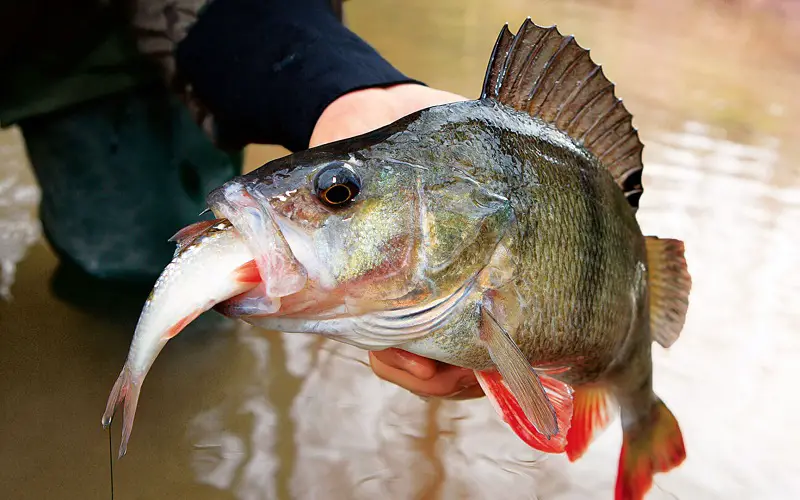
When targeting perch, one of the most effective techniques is using live bait, such as small minnows. These tiny fish are readily available at any local bait shop or can be caught using a seine net.
To increase your chances of catching more fish, use smaller-sized minnows that measure between two and three inches in length.
Hooking through either the lips or back will give your minnow natural movement that will attract curious perch swimming nearby.
Don’t forget about adding a bobber or float; this will help you control the depth of your minnow, making it easier to target perch while avoiding other fish species.
It’s also essential to experiment with different retrieval techniques when using live bait for perch fishing. Try various reeling methods, such as slow and steady or short and jerky movements, to imitate natural prey movement in the water.
Pay close attention to how the fish are responding and adjust your approach accordingly.
#2 Catching Perch with Worms
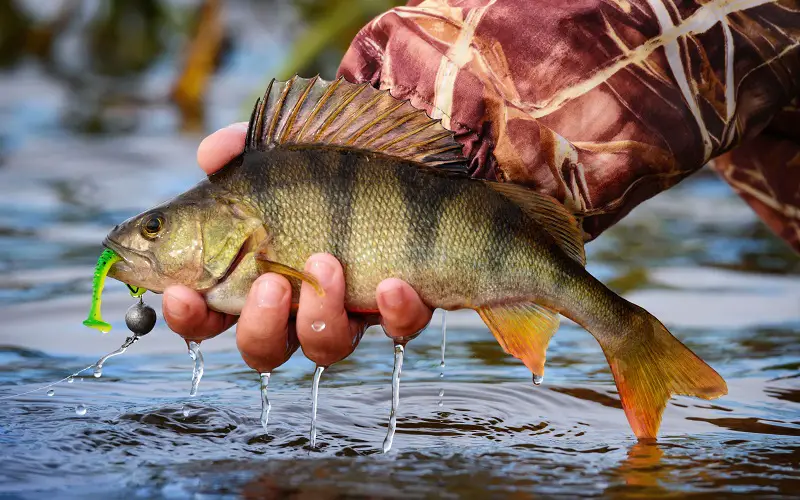
If you’re looking to boost your chances of success when perch fishing, using worms as bait is a great option.
Not only are they readily available and easy to use, but they can also be very effective at enticing perch to bite. To get started, choose a small worm that matches the size of the prey that perch typically feed on.
Rig up your line and cast towards underwater structures where perch tend to gather. Vary your retrieval speed and technique until you find what works best for the perch in your area.
Using techniques like slow and steady or quick jerky motions to mimic the natural movements of baitfish. Remember to stay aware of water temperature, as this can affect feeding patterns, especially during cooler months or ice fishing season.
Using bobbers or floats to suspend the worm at a specific depth in the water can also help entice deeper-water perch to bite.
#3 Catching Perch with Larvae
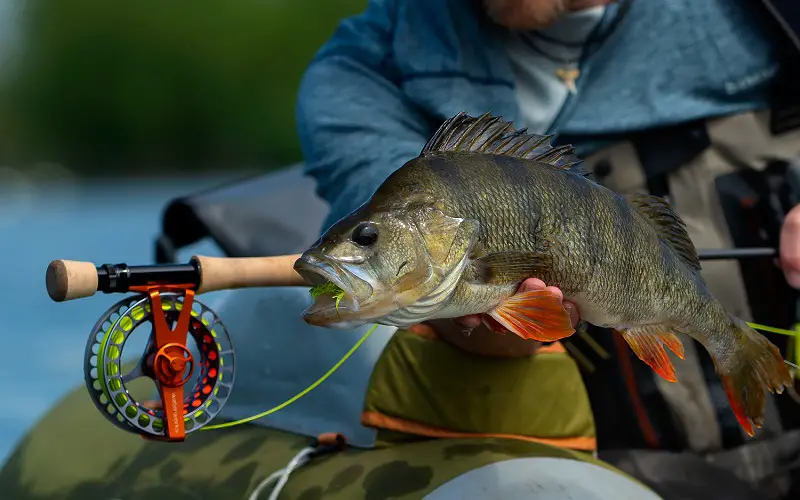
For those looking to catch perch while fishing, larvae can be an excellent choice for bait.
Maggots, wax worms, and mealworms are just some of the options that anglers have at their disposal. To increase your chances of success when fishing for perch with larvae, it’s important to use smaller hooks and lighter tackle gear.
By doing so, you’ll have better control over your bait and increase your chances of hooking one of these elusive fish.
Experimenting with different rigging techniques like a drop shot or Carolina rig can also help attract more yellow perch onto your line.
When deciding where to place your bait, keep in mind that perch tend to feed at different depths depending on the time of day and water temperature.
By paying attention to these factors and adjusting your bait placement accordingly, you’ll maximize your chances of catching more fish.
#4 Using Crayfish to Catch Perch
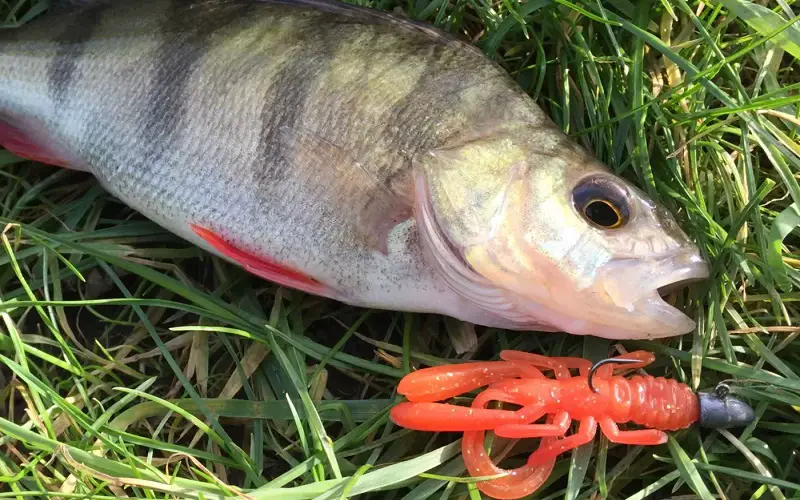
Catching perch can be challenging if you don’t have the right bait. However, using crayfish as bait can be an excellent tactic when targeting this elusive species. When using crayfish as bait for perch fishing, remember these tips:
Firstly, ensure that you rig your crayfish correctly with either live or artificial bait, according to personal preference. Make sure that it looks natural in the water because perch won’t bite if it doesn’t look like prey.
Secondly, try casting near underwater structures such as weed beds, gravel areas, or drop-offs where perch tend to congregate. Using a bobber or float can keep crayfish off the bottom and make them more visible to perch.
Lastly, pay attention to water temperature and time of day when fishing for perch with crayfish, since they tend to feed more actively during cooler periods or late afternoon/early morning hours.
Do not forget to vary your choice of color and size until you find one that works best for your particular fishing conditions.
#5 Catching Perch with Spinners
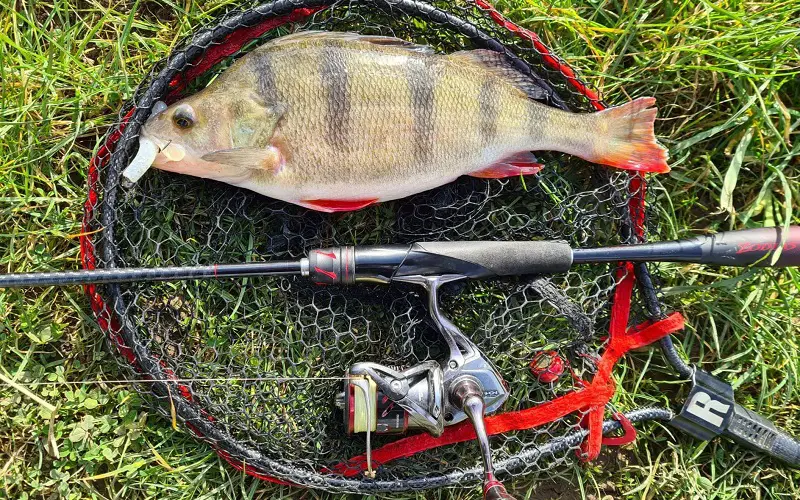
Catching perch with spinners can be a fun and rewarding way to spend a day on the water. Anglers looking to try this method should keep a few things in mind.
To start, selecting the right spinner based on water conditions and the time of day is crucial. Varying your retrieve speed and depth while casting can also improve your chances of success.
Using a light- to medium-action rod with a 4–8 lb test line is recommended for best results.
While experimenting with different spinner types, such as inline or spinnerbait, keep in mind that perch tend to feed on smaller prey like invertebrates, vegetation, and small fish.
As such, selecting lures that imitate these prey items can increase your odds of attracting bites from schooling perch.
#6 Lure Fishing for Perch
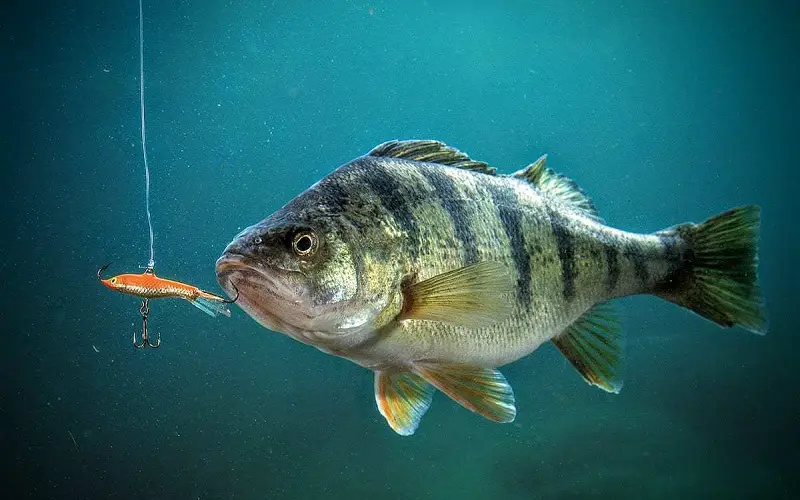
When it comes to catching perch, lure fishing is a go-to strategy for many anglers. The first step in this technique is selecting the right type of lure.
Anglers should opt for lures that mimic the prey movements of perch, such as small jigs or spinners. Varying your retrieval speed and technique can also help you attract more fish.
Paying attention to water temperature and depth is crucial when choosing which lure to use, as is looking for areas with structure like rocks or weed beds where perch may be hiding.
It’s important to note that patience and persistence are key when it comes to lure fishing for perch. While this technique can be highly effective, these fish can be finicky biters at times.
Perch feed on a varied diet of invertebrates, smaller fish, and even their own kind, so finding the perfect bait isn’t always easy.
Anglers who enjoy catching yellow perch may want to consider using soft plastics or creature baits as well. These types of lures help mimic the movements of other common prey like crayfish or other small aquatic creatures.
Understanding Perch Feeding Habits

Perch anglers know that understanding the feeding habits of these game fish is crucial to catching them.
These common perch have a varied diet consisting of smaller fish, invertebrates like maggots and crayfish, and even small amphibians. They will also eat vegetation if needed.
One thing every angler must keep in mind is that while fishing for perch, it is important to pay attention to water temperature and depth, as these factors can significantly affect their feeding habits.
Early morning or late afternoon are the best times to target schools of yellow perch when they are most active. However, experienced anglers know that good catches of perch can be made year-round using different techniques depending on the season.
During the summer months, look for deeper water drop-offs where cooler temperatures prevail because perch tend to avoid warmer waters.
When it comes to bait selection, live bait like worms or small minnows works well with ultralight tackle while casting into shallow water near vegetation or structures.
Lure fishing is also popular among anglers who prefer jigging with soft plastics or creature baits, using crankbaits or spinners with chartreuse bodies for better visibility in murky waters.
FAQ
When To Catch Perch?
Although perch can be caught at any time of year, the prime times are in the spring and fall.
During these seasons, perch move to shallow waters to spawn and start feeding heavily to prepare for winter, making them more active and easier to catch. For the best results, try fishing in the early morning or late afternoon.
Where To Catch Yellow Perch?
Yellow perch inhabit freshwater bodies with structures like drop-offs, weed beds, and submerged logs.
They are commonly found in the Midwest and Northeast regions of the United States. Popular locations for catching yellow perch include Lake Erie, Lake Michigan, and the Finger Lakes in New York.
Where To Catch White Perch?
White perch can be caught in freshwater bodies like ponds, lakes, and rivers with structures such as weed beds, fallen trees, and drop-offs.
These fish tend to school together, so multiple catches are likely. Popular fishing spots include the Chesapeake Bay, Lake Erie, and the Hudson River.
Conclusion
Perch fishing can be a fun and exciting experience for anglers of all levels.
Understanding the different techniques and strategies to catch perch using various baits and lures is key to a successful fishing trip.
It’s important to pay attention to their feeding habits, know when and where to fish for them, and always follow local fishing regulations.
Whether you’re an experienced angler or just starting out, there’s nothing quite like the thrill of reeling in a big perch.
So grab your gear, hit the water, and enjoy the adventure!
References:


